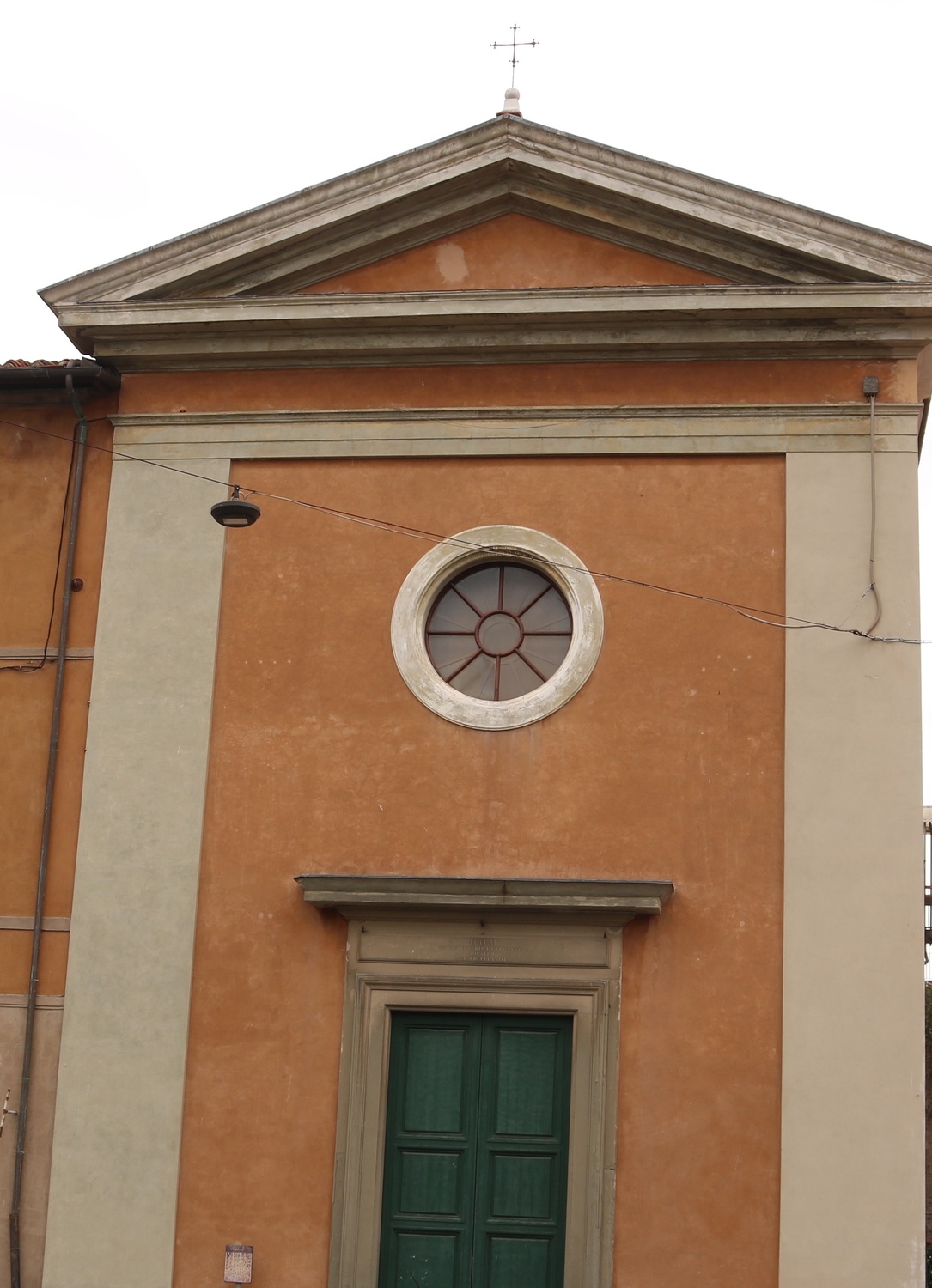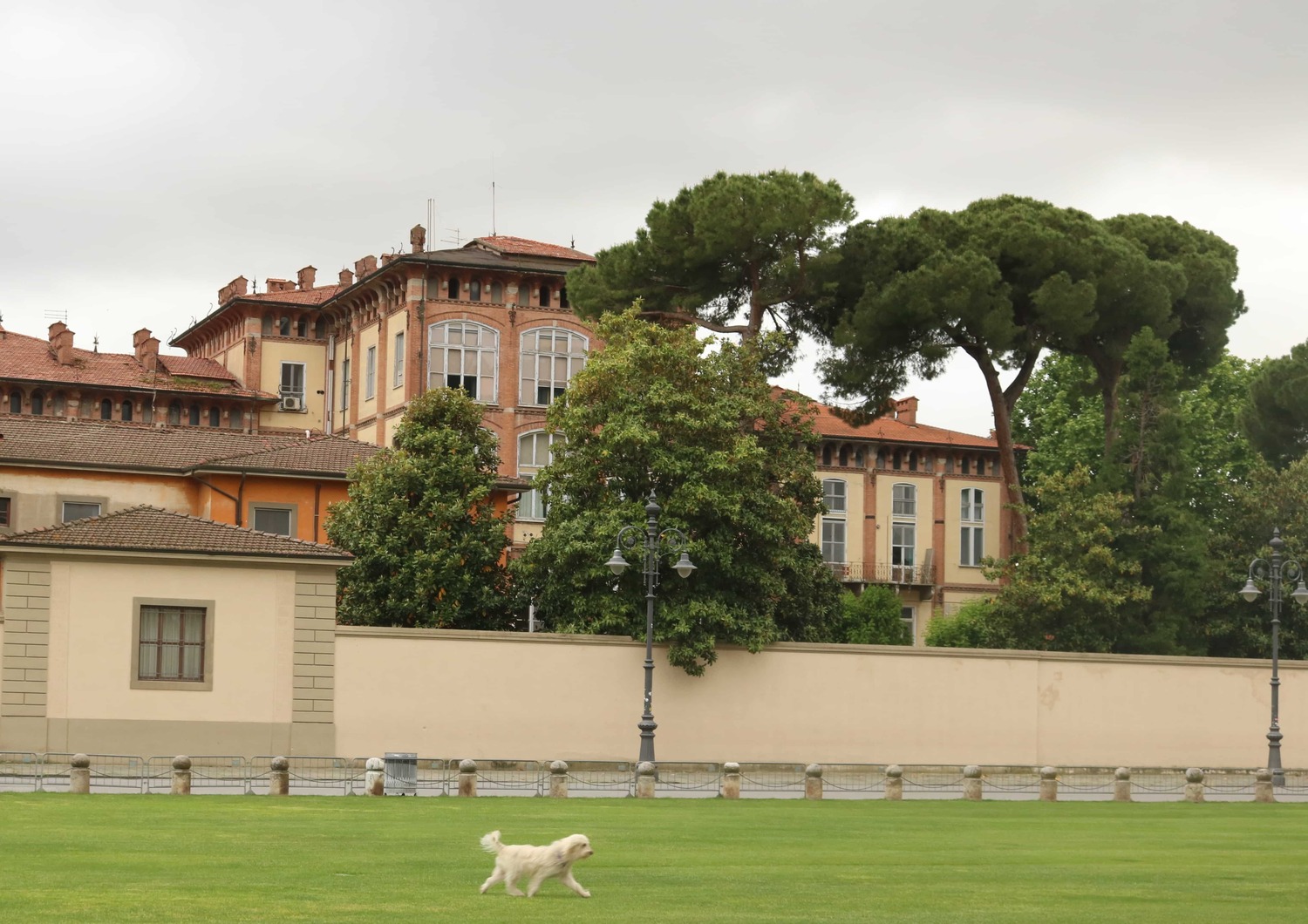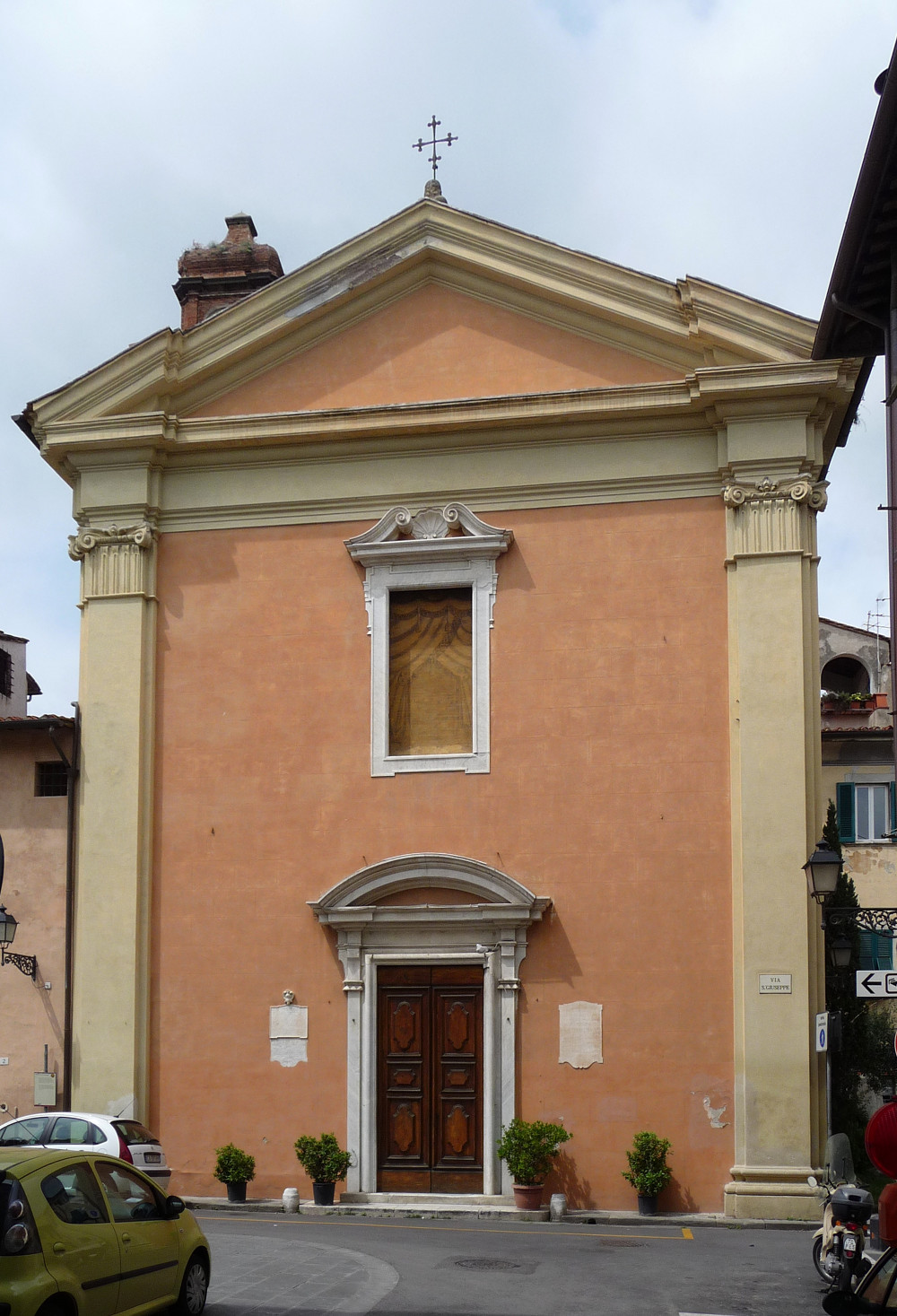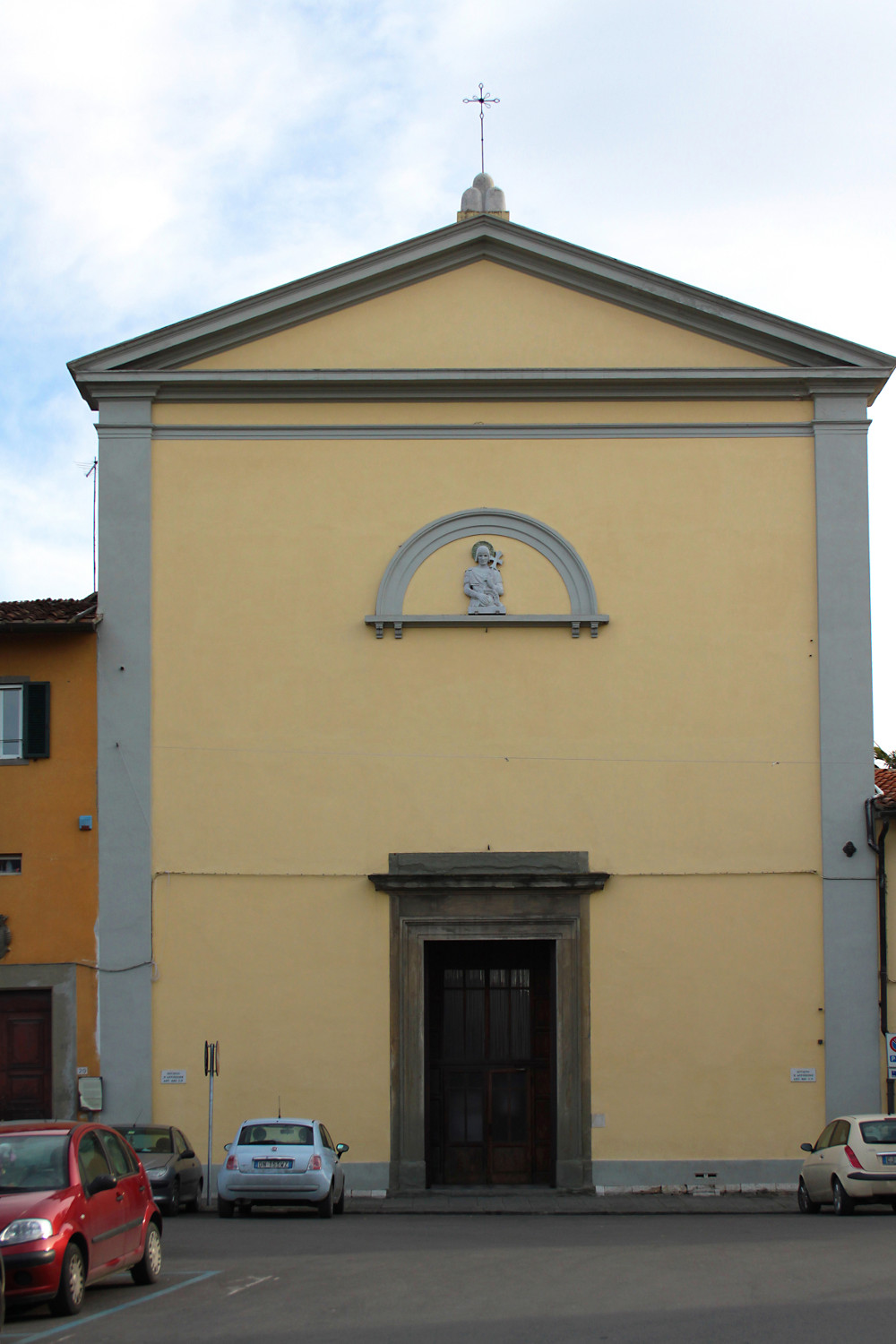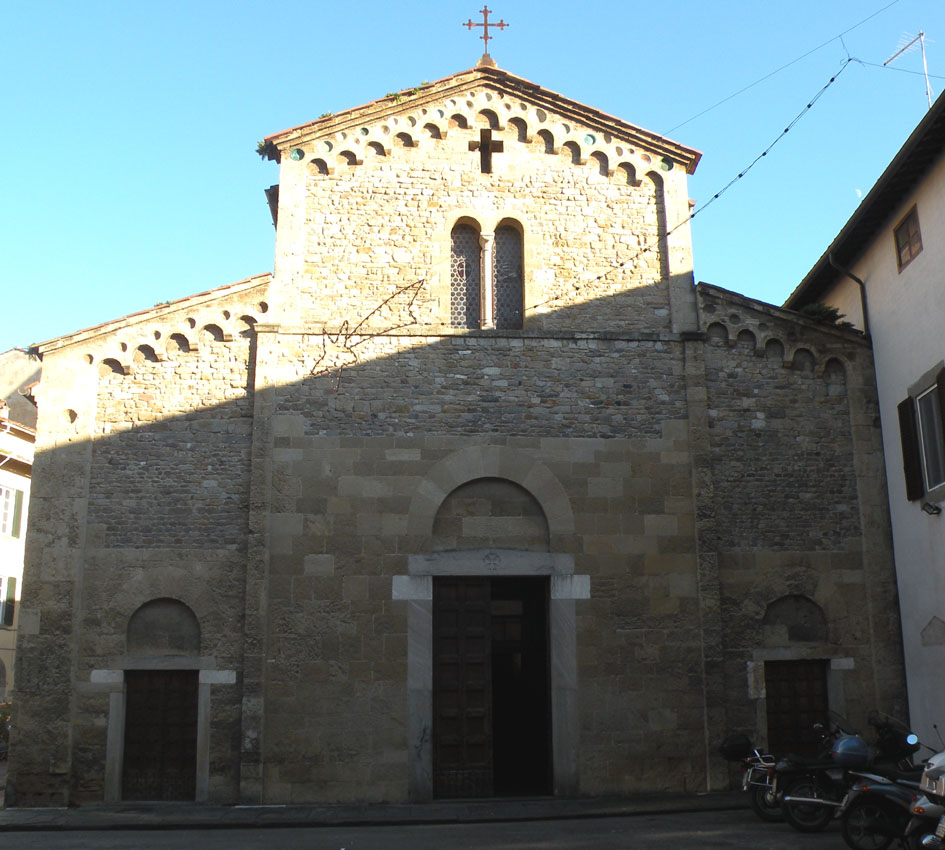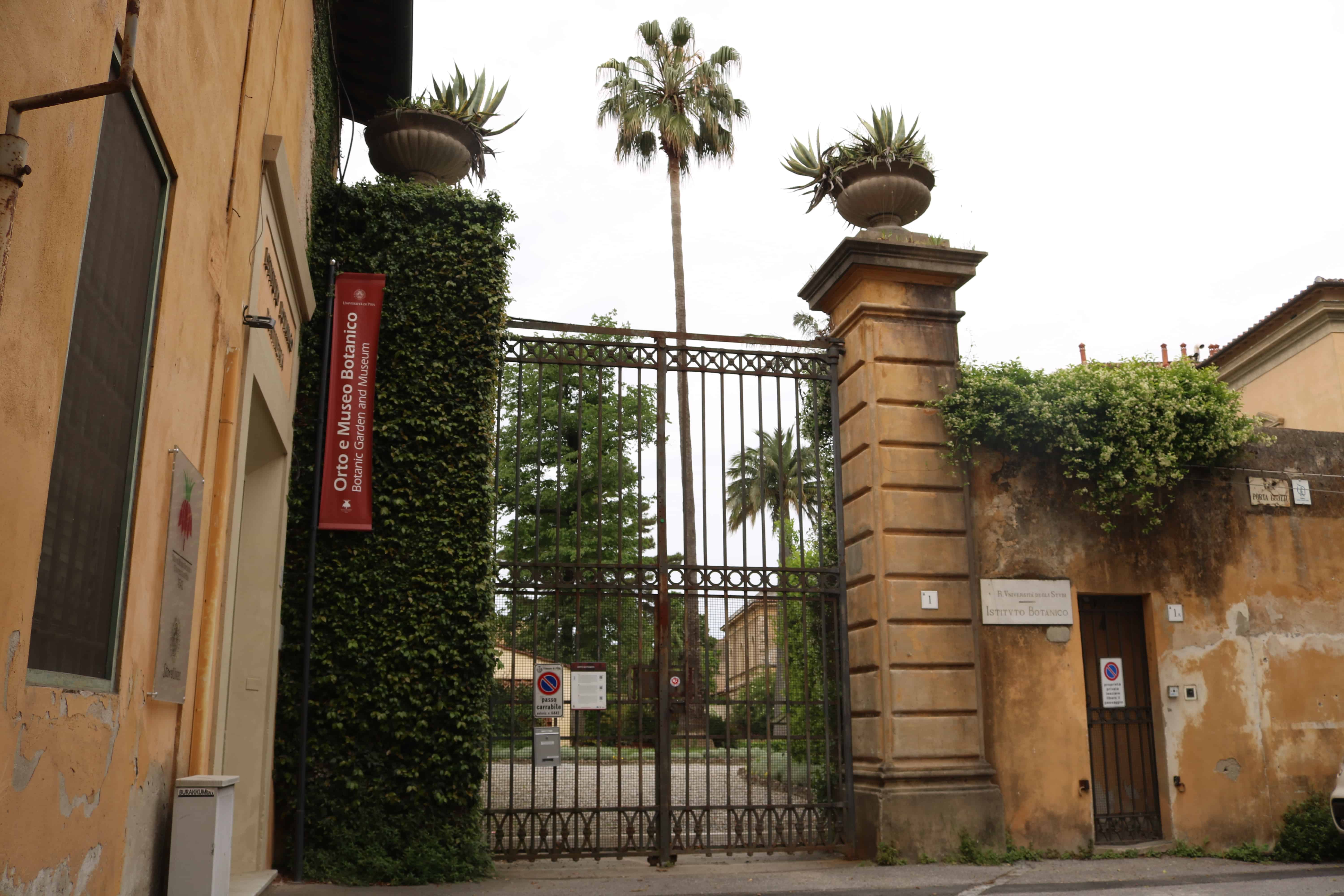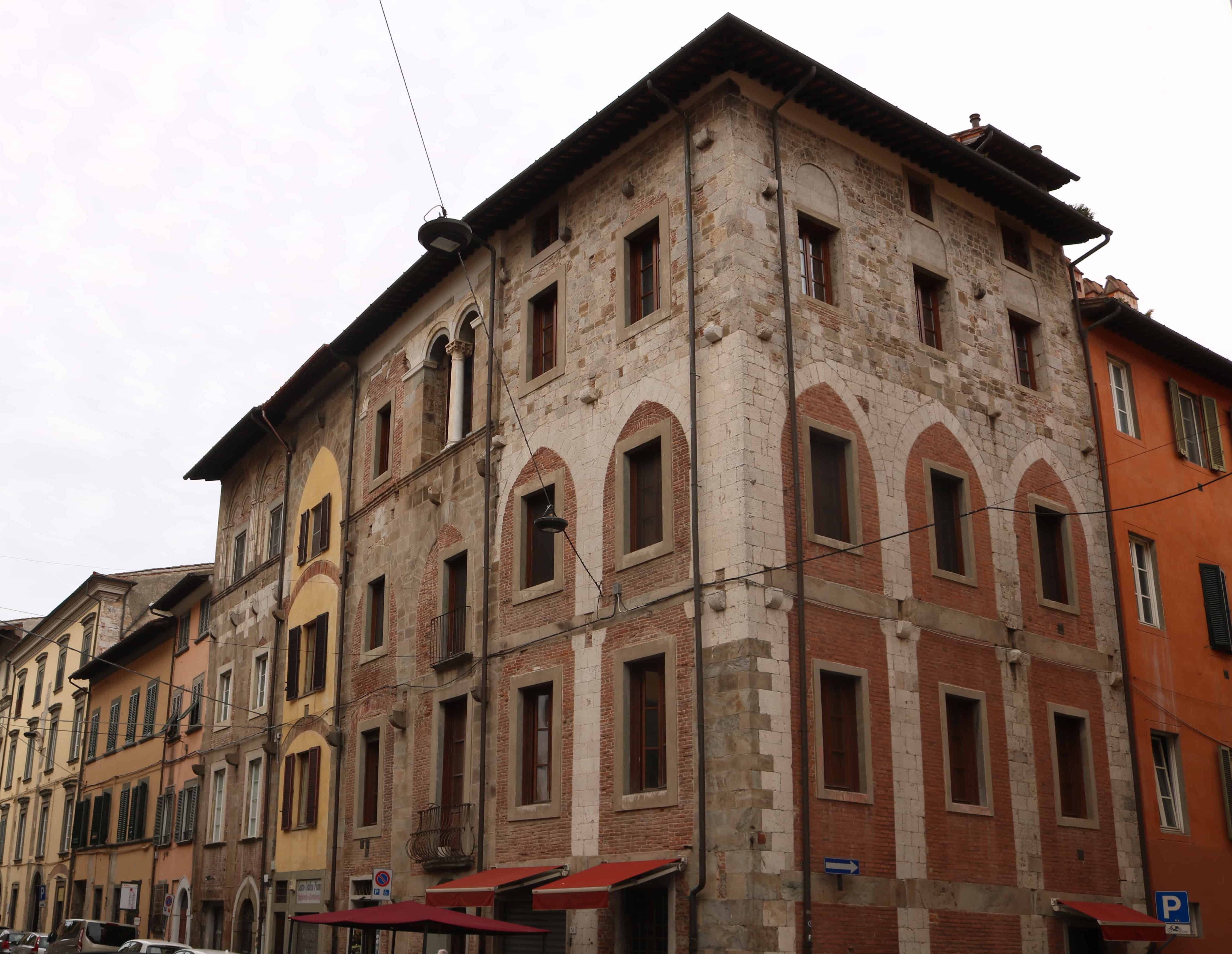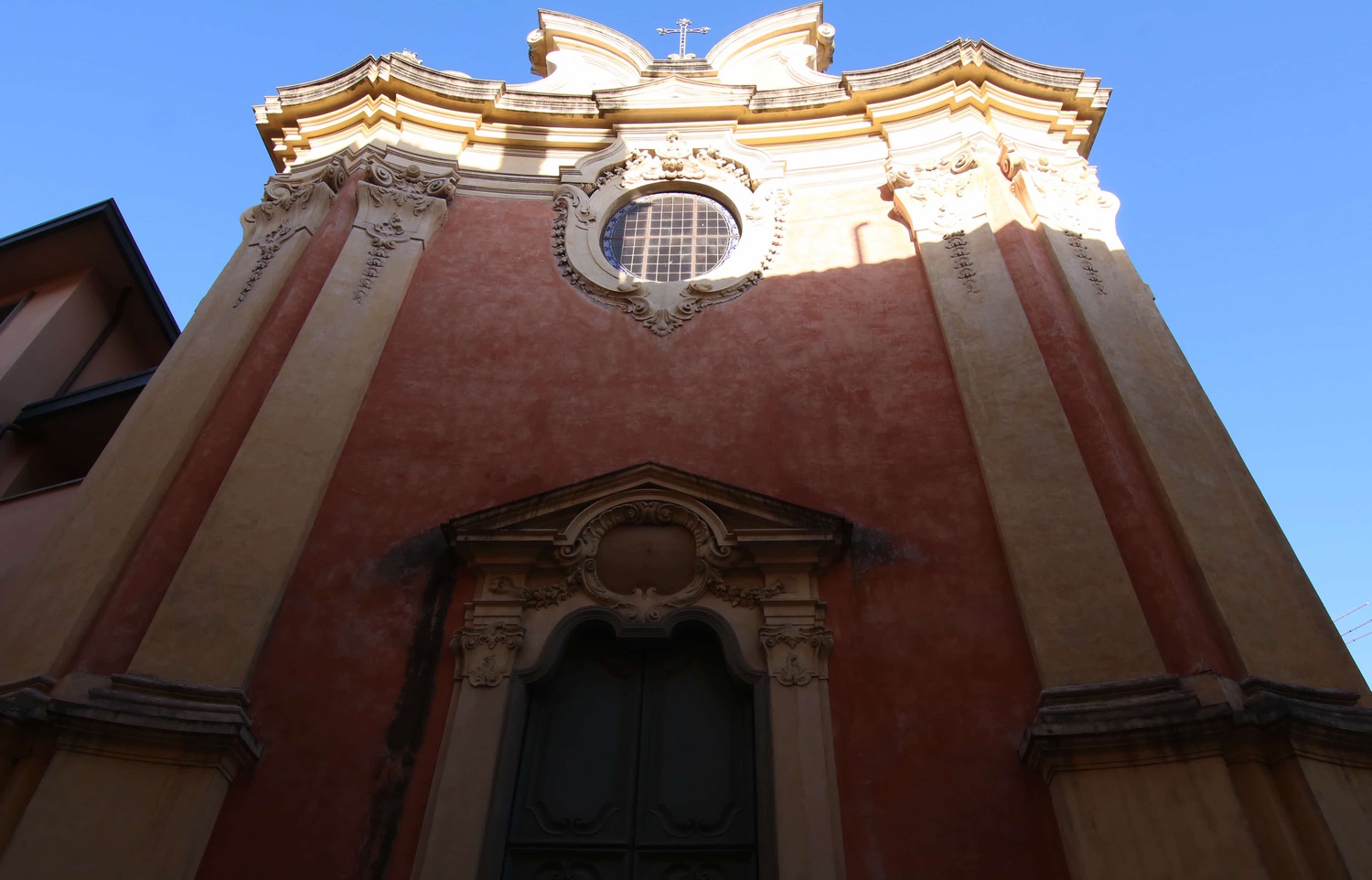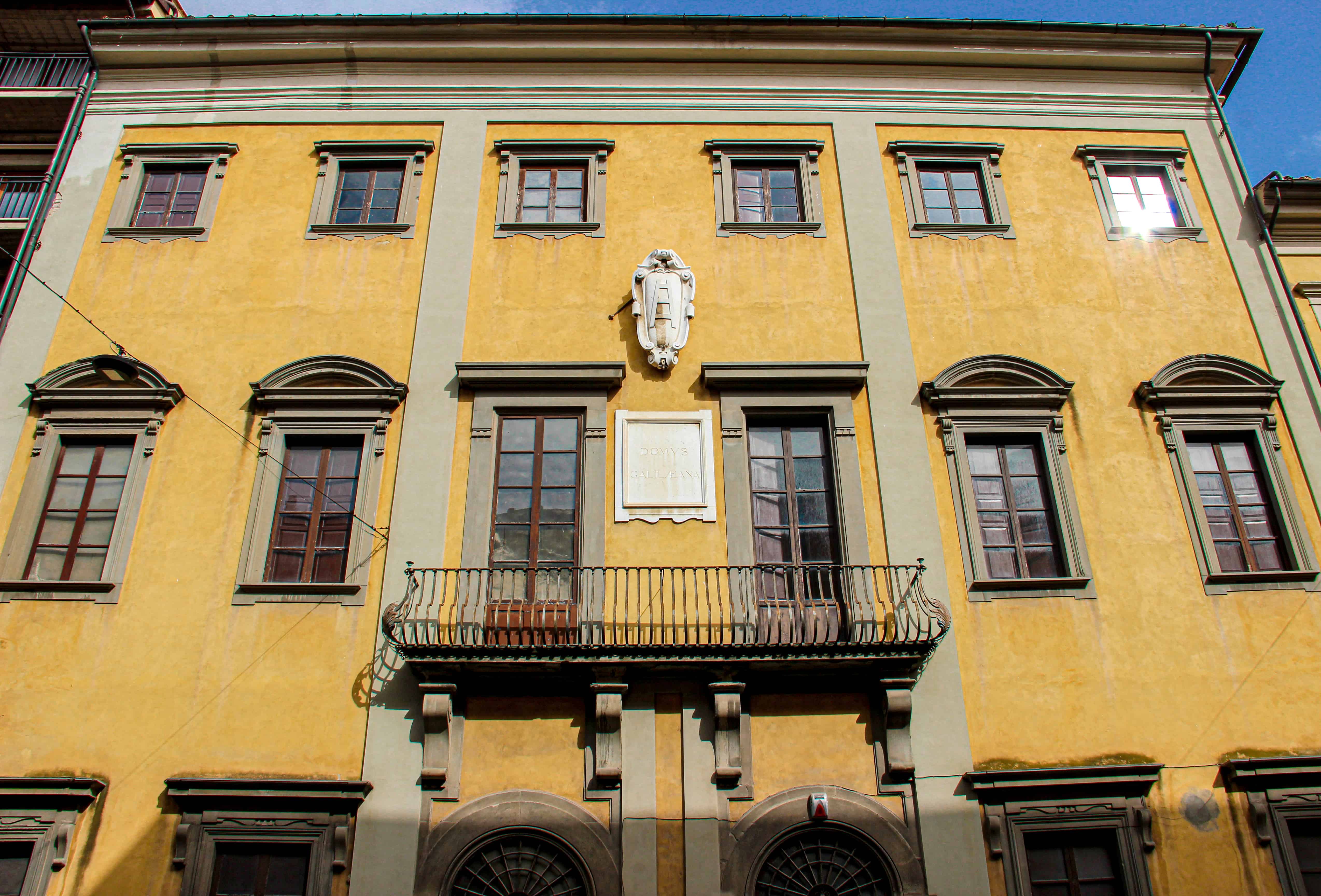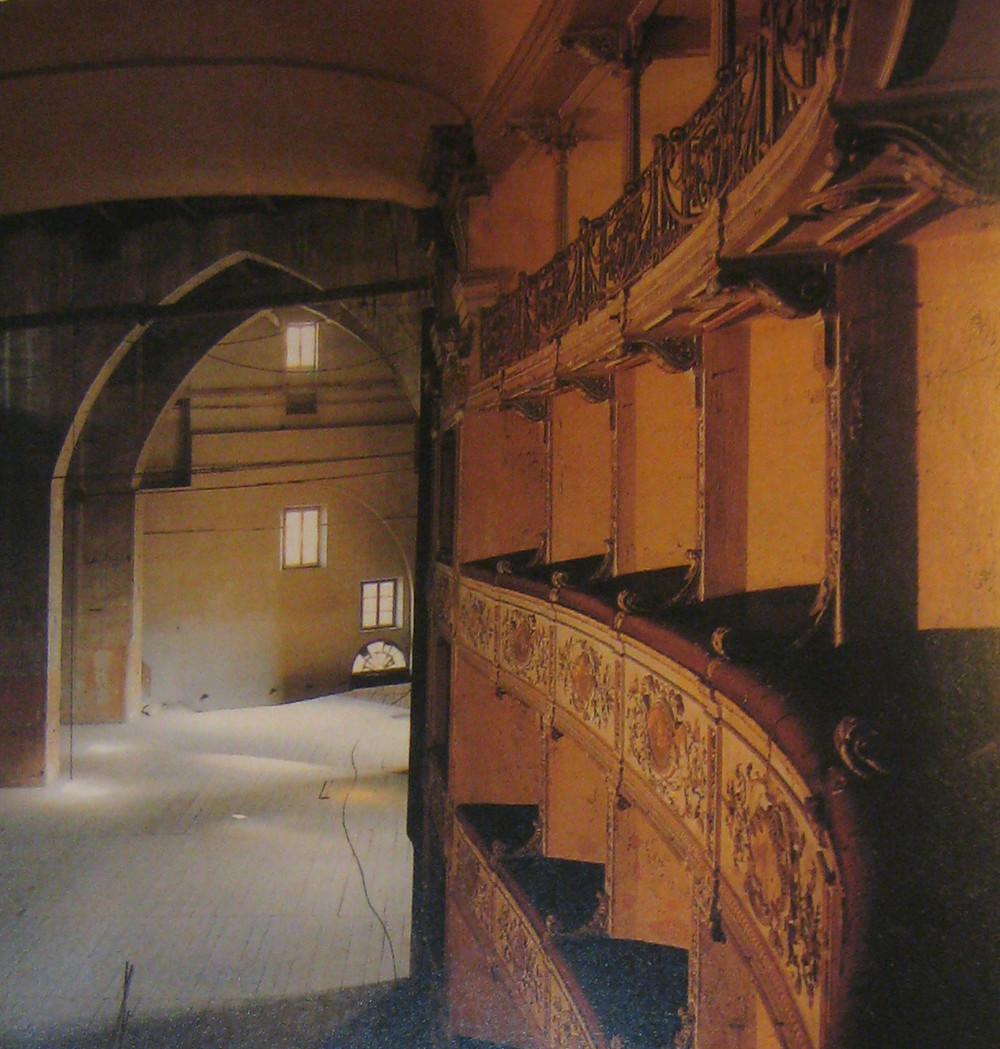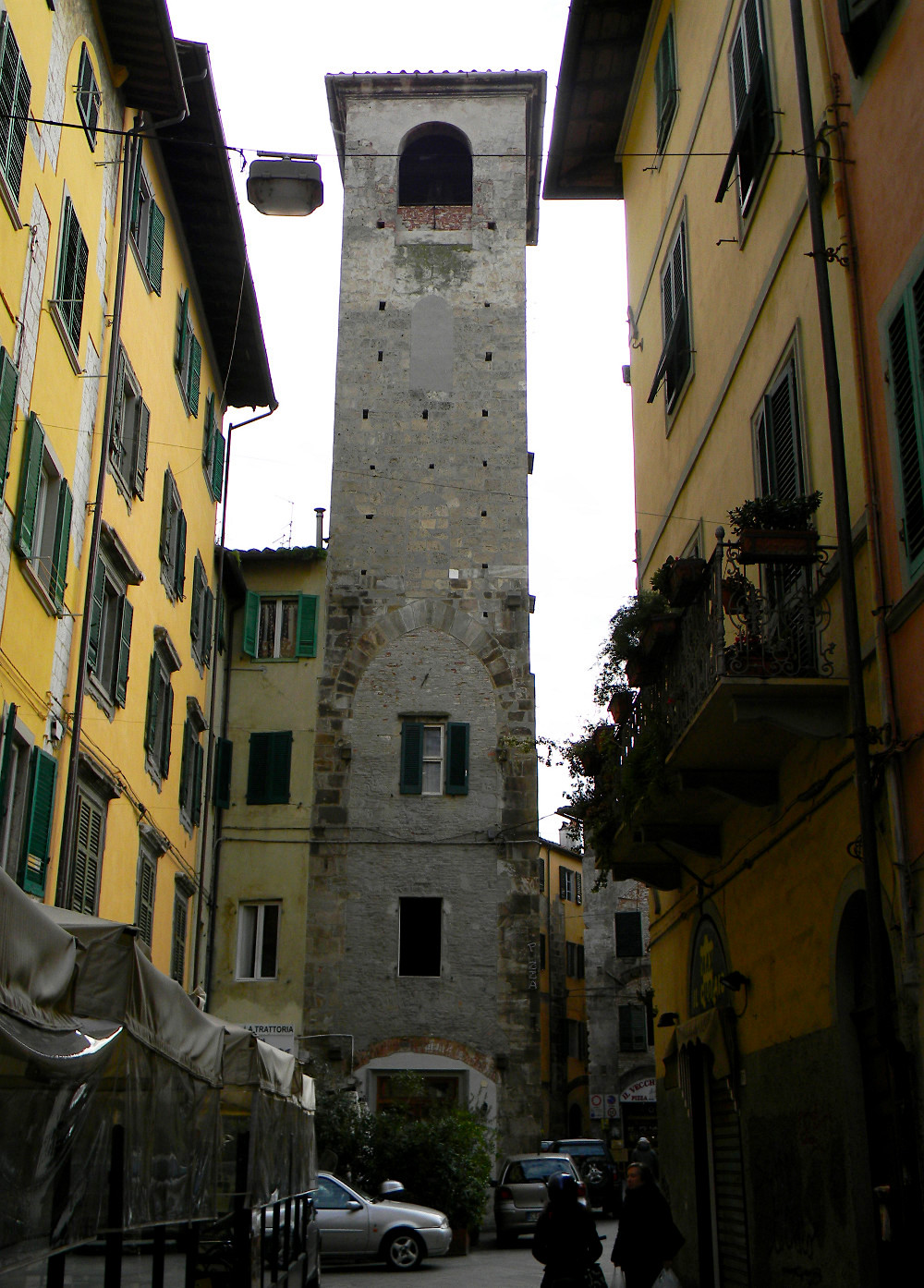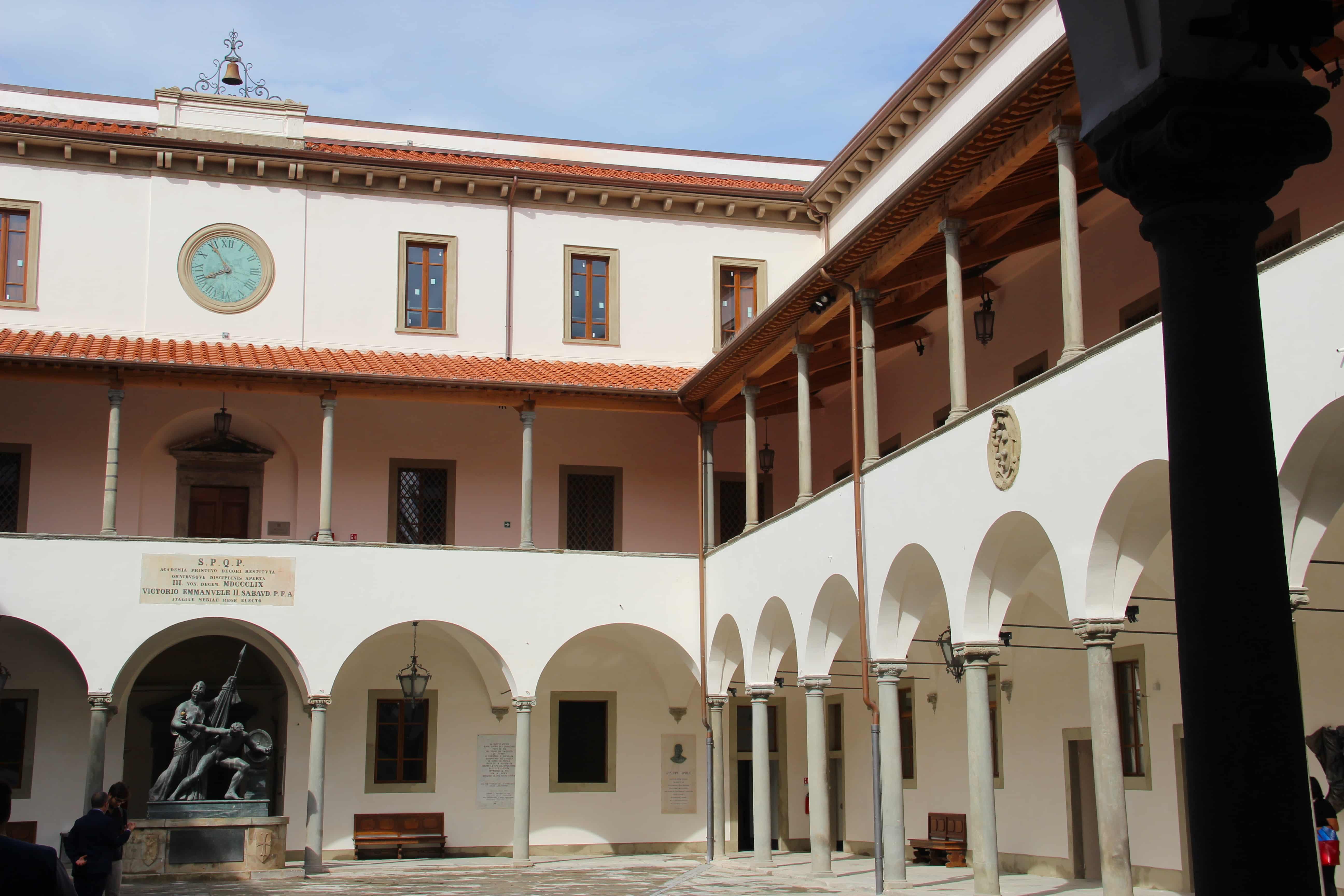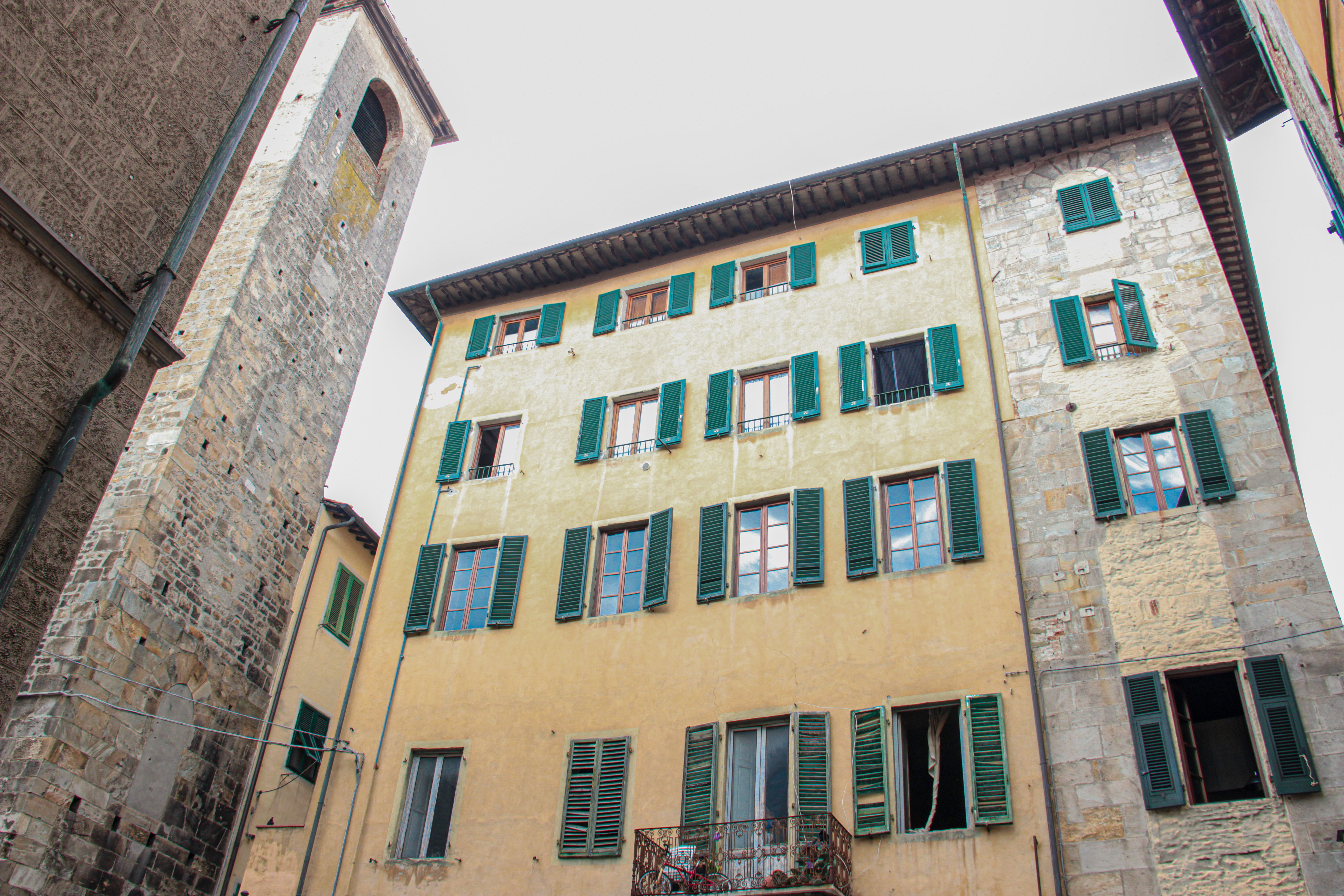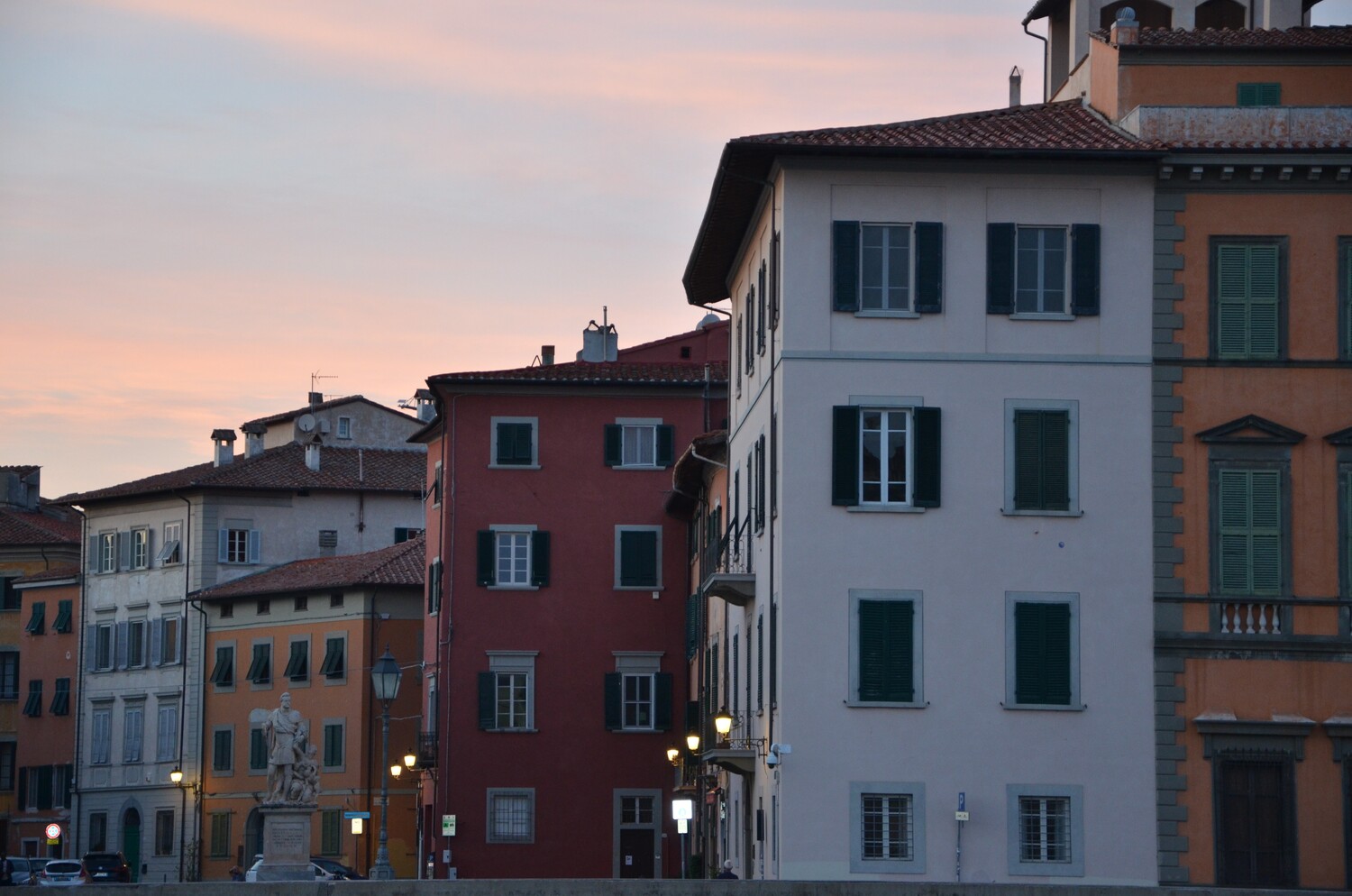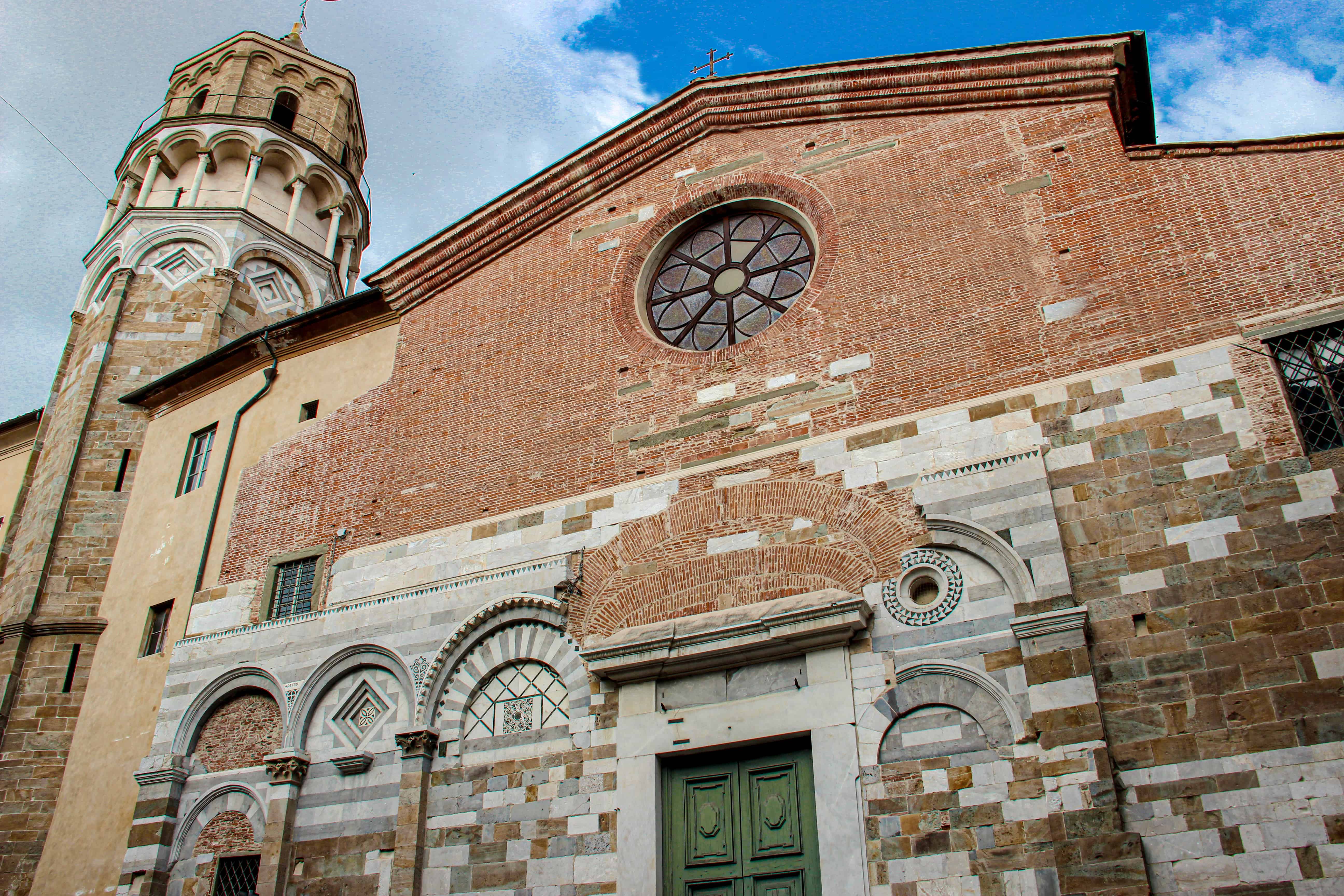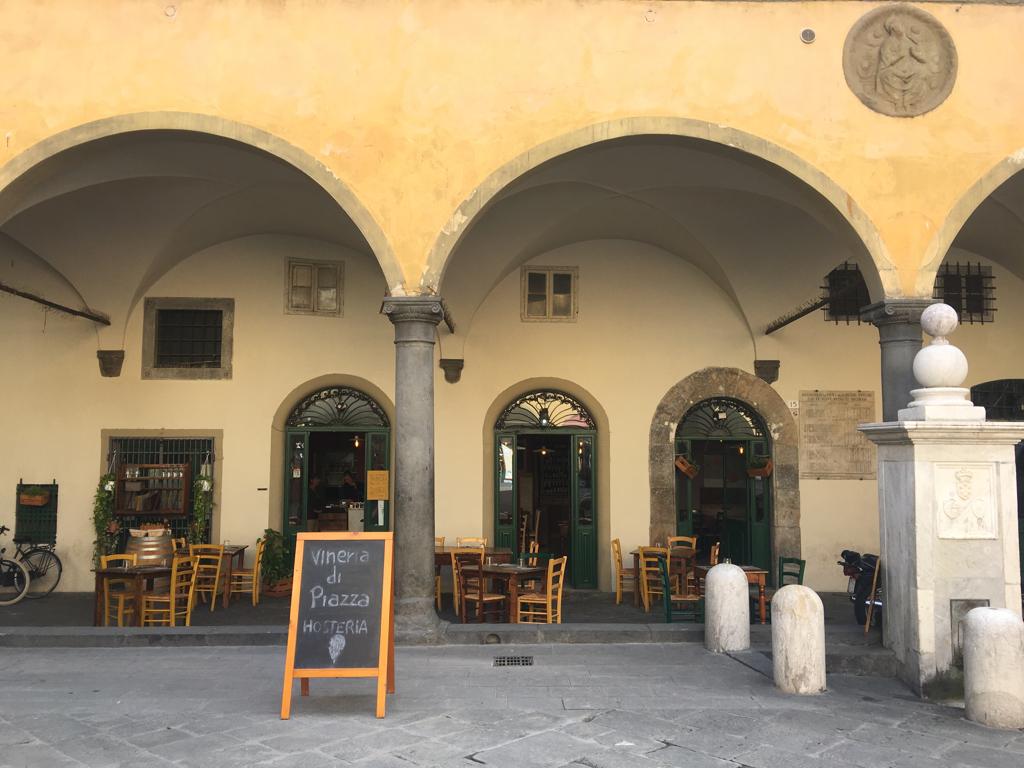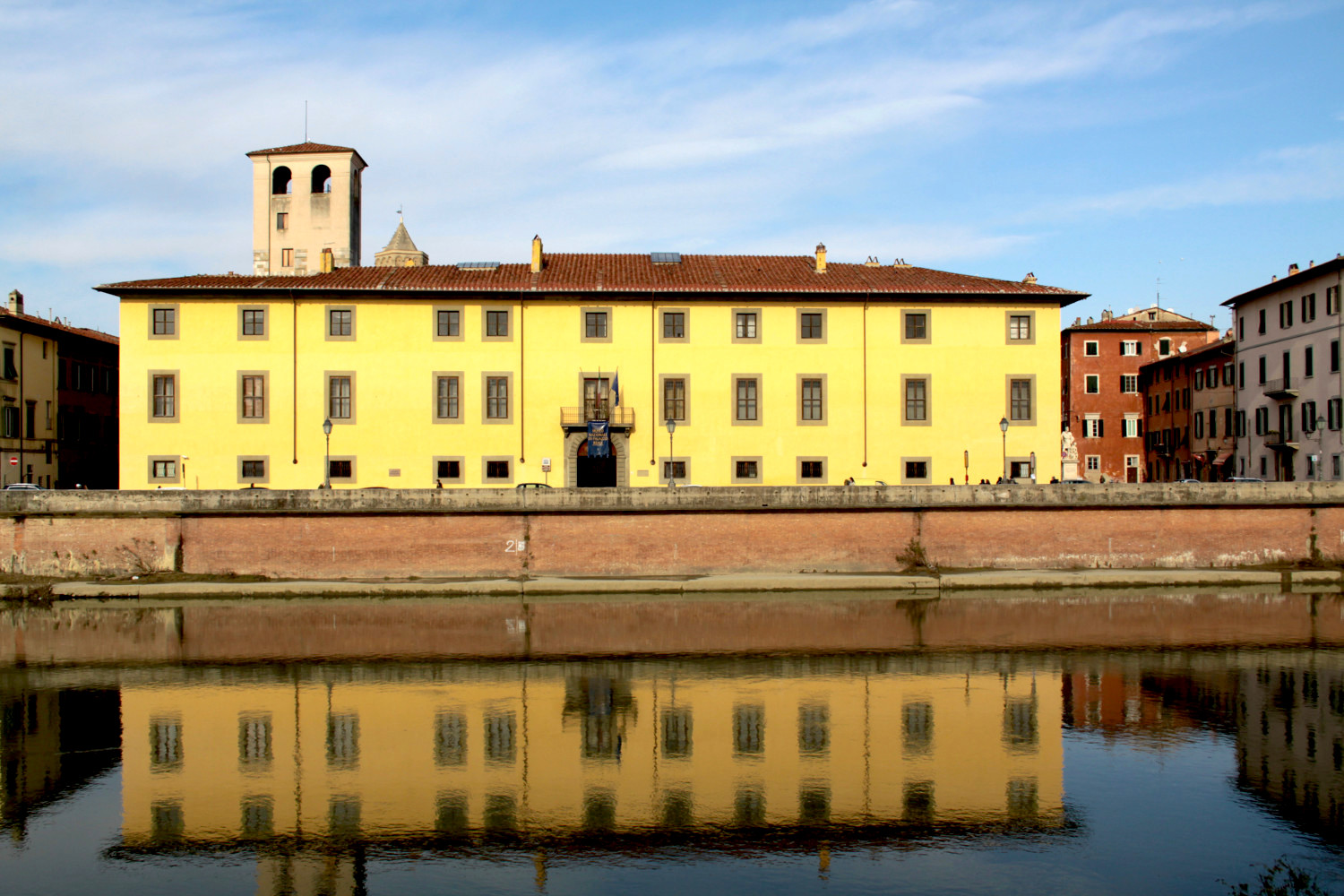Palazzo dell’Arcivescovado, The Archbishop’s Palace

The Archbishop’s Palace today is the result of renovations under the prelate Philip de’ Medici (mid 15th century) by the architects Francione and Baccio Pontelli, who created the inner courtyard surrounded by white marble columns.
The façade, redesigned in the 17th century by Archbishop Carlo Antonio Dal Pozzo, was again modified in the neo- Renaissance style in the early 19th century. Simple and solemn, it relies on the contrast between the plaster of the walls and the bare stone finishings of the corners, windows, pediments and the large doorway, flanked by two pillars on which the first floor terrace rests. The inner courtyard contains a statue of Moses by Andrea Vaccà (18th century); there are also busts of several Pisan archbishops.
The building occupies an area inhabited since remotest times. Archaeological excavations recovered Etruscan artifacts and the remains of a Roman domus that was inhabited and re-structured several times between the late Republican age and late antiquity. From the early 10th century, the area became the headquarters of the Bishops court; the Church of S. Giorgio ad Curte Piscopi, later incorporated into in the south-eastern corner of the building stood here. Documents recount that in 1178 the Domus Episcopi was already sufficiently spacious and elegant to receive Federico Barbarossa, but it was not until the time of Archbisop Saltarelli in the 14th century that the building assumed an imposing appearance, before further enlargement and changes in mid 15th century.
The Archives of the Arcidiocese of Pisa are kept in the Archbishop’s palace.

